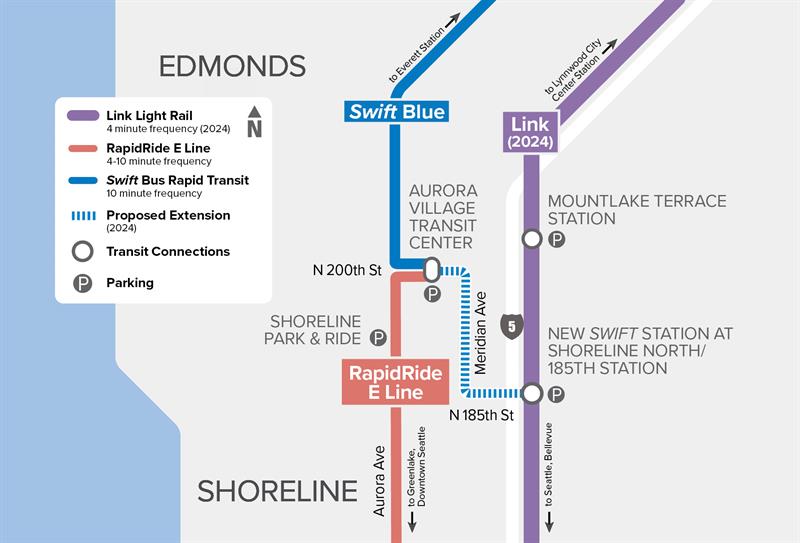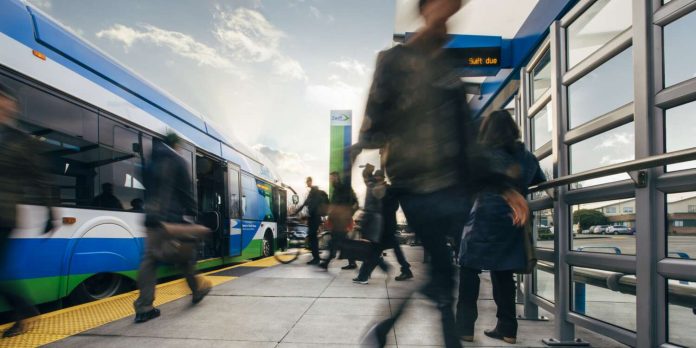
Community Transit continues to march forward with its affordable and impactful bus rapid transit system expansion. The agency has officially picked an opening date for the upcoming Swift Orange Line, and is engaging with the public on potential station locations for expansion of the Swift Green Line.
Swift Orange Line’s opening is mere months away
Next year, Community Transit will launch the long-awaited Swift Orange Line on March 30 with a community celebration. That’s just two-and-a-half years after construction on the project broke ground. The line will be third in the agency’s growing Swift bus rapid transit network. Slinking through Ash Way and Alderwood, the line will connect Mill Creek, Lynwood City Center station, and Edmonds College together. This will serve key destinations, urban districts and institutions, and transit facilities, including connections with the Swift Blue and Green Lines and Sound Transit’s Link 1 and 2 Lines.
Community Transit was highly successful in obtaining grants for the $83 million project. About $73 million came from federal and state grants while the remainder of project costs were covered by local taxes.
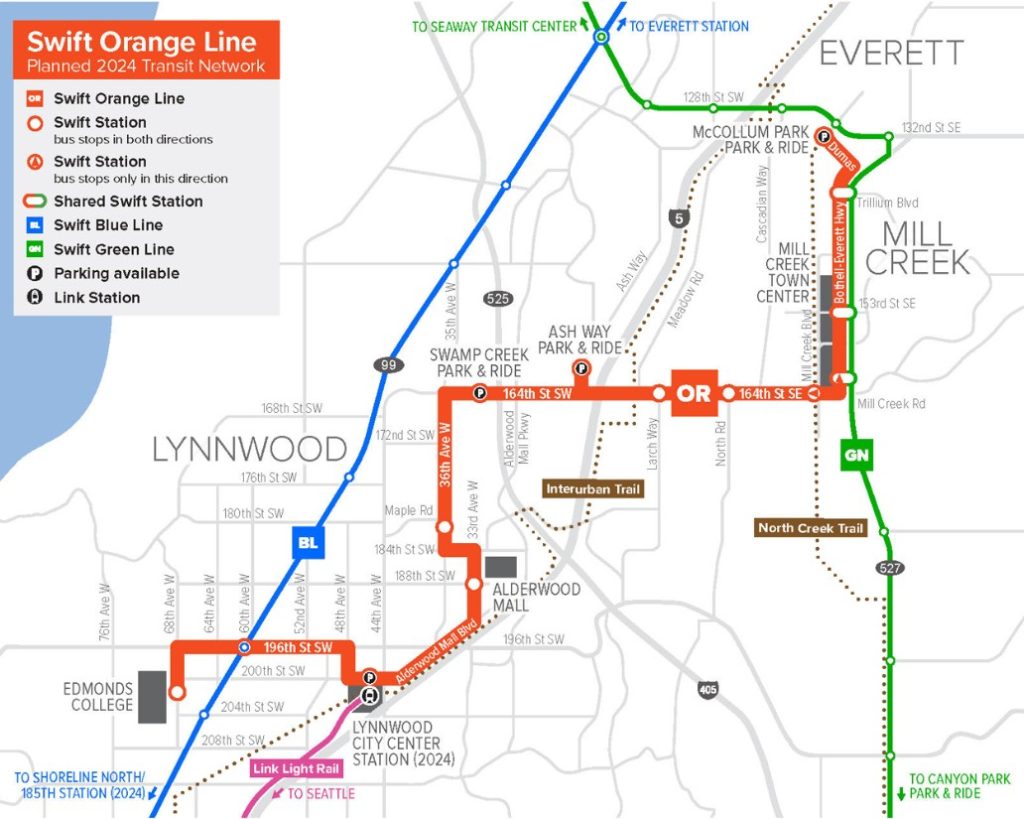
The new line will be about 11 miles long and offer 13 stations or station stop pairs. Nineteen platforms for station stops will be provided with all the standard Swift accoutrements: transit shelters, off-board ORCA readers, receptacle bins, lighting, real-time arrival information signs, and seating. With the line ending at McCollum Park Park-and-Ride, Community Transit has redesigned the facility, and a new transit center will be provided at Edmonds College — the other end of the line.
Service on the Orange Line will be quicker and more frequent than regular buses. Buses stop less often due to the longer distance between station stops, and buses often only dwell for a few moments at stops due to off-board payment and all-door boarding. The line will also feature special bus lanes and transit signal priority at key locations.
Right now, sections of the Orange Line’s corridor are covered by Routes 105, 113, 115, 116, and 120. When Community Transit implements its Transit Changes in 2024 and Beyond plan later next year, overlapping local service will be consolidated primarily into Routes 103, 121, and 166.
As to service levels, Community Transit plans to operate the Orange Line with a large span of service and on weekdays regular daytime service will be every 10 to 12 minutes. During early morning, nights, and on weekends, service will be less frequent as every 15 to 20 minutes.
Blue Line extension on deck for 2024
Later in 2024, Community Transit is also planning to extend the Swift Blue line deeper into King County. This will coincide with the Lynnwood Link Extension opening next fall by providing convenient access to the Shoreline North/185th Street station. Service currently terminates at Aurora Village Transit Center in Shoreline, but the extension would help southern Snohomish County riders avoid backtracking on buses from Lynnwood City Center station.
Riders across all Swift lines can expect to see buses come fitted with new digital onboard signage — the best in the region even edging out Link — next year. The agency to have these fully rolled out in time for the Lynnwood Link Extension opening.
Swift Green Line extension still in planning
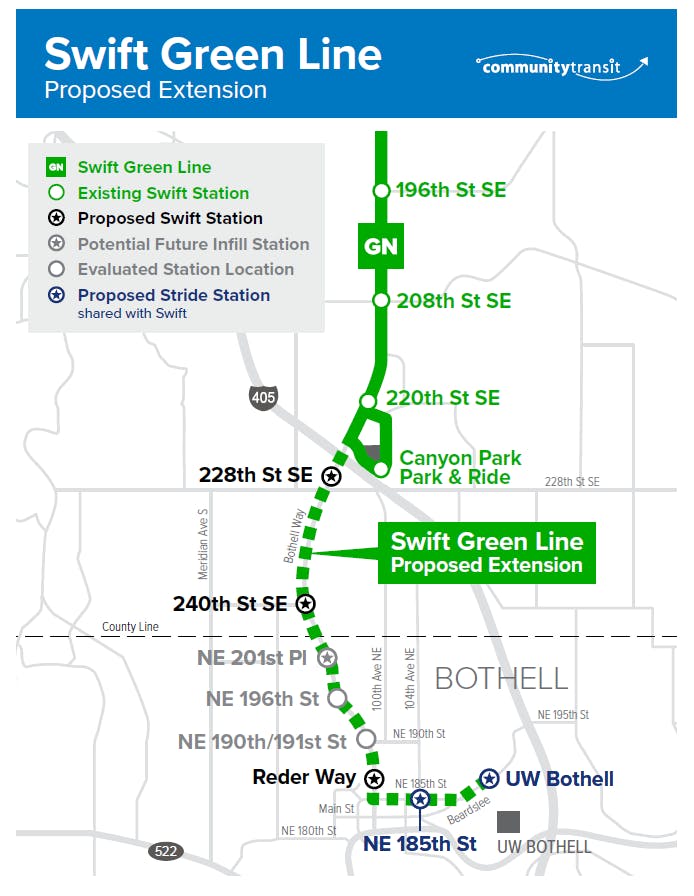
As for the Swift Green Line, Community Transit plans to extend the line deeper into Bothell to serve the city center and University of Washington Bothell/Cascadia College campus. The line currently terminates in the Canyon Park area. The extension is planned to provide up to six station pairs. Locations being evaluated include:
- Bothell Way at 228th Street SE
- Bothell Way at 240th Street SE
- Bothell Way at NE 201st Place (potential future infill station)
- Bothell Way at NE 196th Street
- Bothell Way at NE 190th/191st Street
- Bothell Way at Reder Way
- NE 185th Street at 104th Avenue NE
- Beardslee Boulevard at University of Washington Bothell
The later two locations being evaluated would be shared with Sound Transit’s Stride S3 Line, a planned bus rapid transit service. As a result, those stations would be under Stride branding instead of Swift branding. Riders will also be able to connect to the Stride S2 Line at Canyon Park once the line opens.
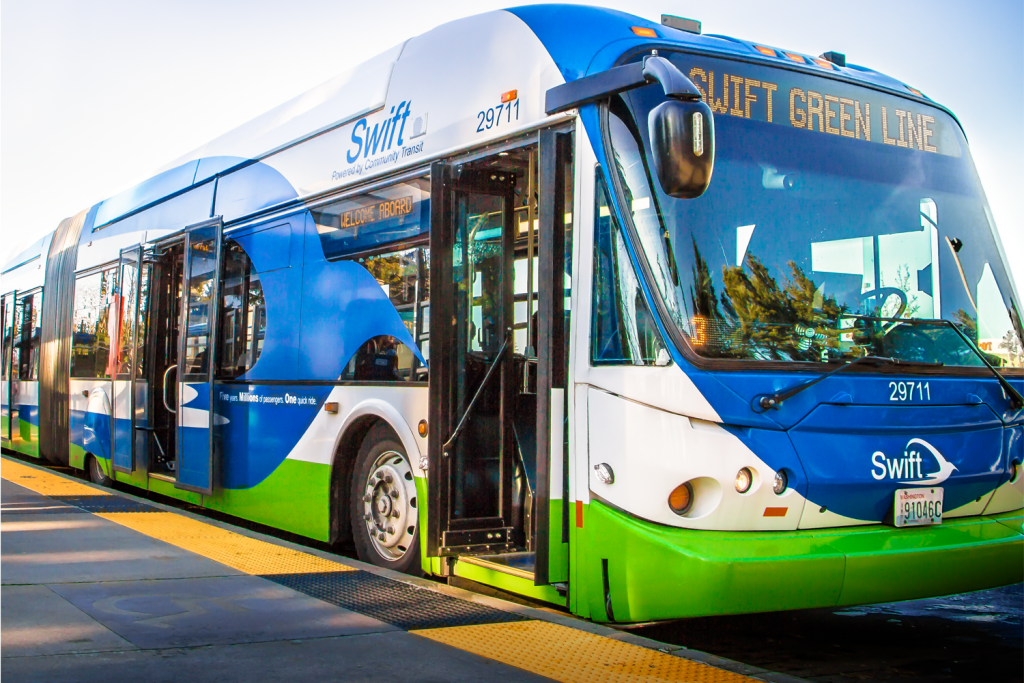
Community Transit hopes to start construction on the project in 2027 and service could follow somewhere between 2028 and 2031. The timing is highly dependent upon completion of Bothell’s road expansion project on Bothell Way.
As far as local service goes, Route 105 will be going away next summer when Community Transit implements its Transit Changes in 2024 and Beyond plan. Routes 106 and 120 will cover sections of former Route 105. Monica Spain, a Community Transit spokesperson that things could change further when the Green Line opens.
“With the Orange and Green Line both operating on SR 527 and ridership demands coming from further east, Route 106 will be the local route connecting Mariner Park and Ride with downtown Bothell through at least 2026,” Spain said. “When the Green Line extension has finished scoping and site selection through this process, staff will then take another look at local route connectivity and determine whether a local route overlay is justified or whether other routing is more appropriate.”
For now, the agency is taking public comment on the proposed station locations through November 10.
Stephen is a professional urban planner in Puget Sound with a passion for sustainable, livable, and diverse cities. He is especially interested in how policies, regulations, and programs can promote positive outcomes for communities. With stints in great cities like Bellingham and Cork, Stephen currently lives in Seattle. He primarily covers land use and transportation issues and has been with The Urbanist since 2014.


